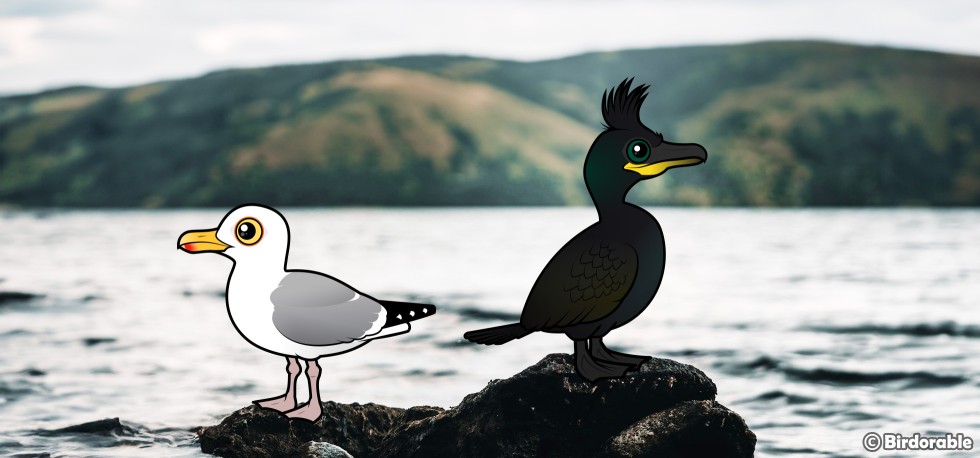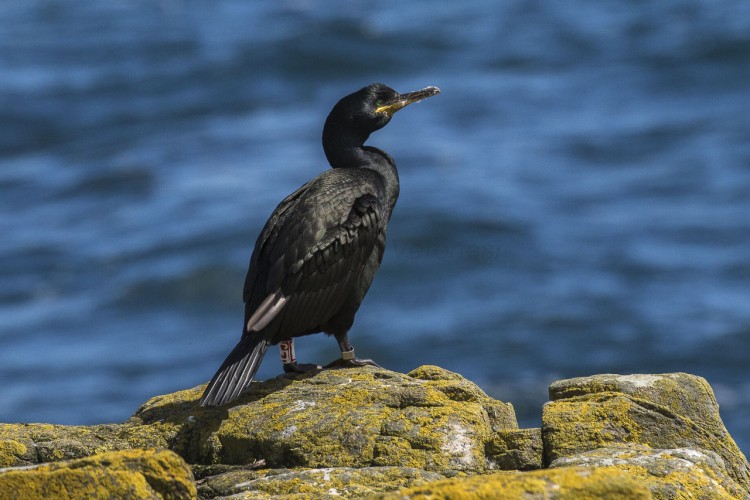Meet the Birdorable European Shag: A Diving Marvel of the Coasts

Birdorable European Shag (right) enjoying the scenery alongside a Herring Gull (left)
We're thrilled to introduce the latest feathered friend to join the Birdorable family - the European Shag! This charming seabird might not be as famous as some of its avian counterparts, but it certainly holds a special place in the hearts of bird enthusiasts, especially those fascinated by the rich birdlife of European coasts and islands.
The European Shag, scientifically known as Phalacrocorax aristotelis, is a member of the cormorant family. It is easily recognizable by its glossy green-black plumage, which beautifully contrasts with the surrounding sea and rocks where it's often found perching. Adding to its distinctive look is a slender, hooked bill and bright green eyes, which seem to sparkle like emeralds against its dark feathers.
One of the most intriguing aspects of the European Shag is its habitat and lifestyle. These birds are true coastal dwellers, rarely straying far from the rugged cliffs and choppy waters of the Atlantic Ocean, from the chilly shores of Iceland all the way down to the warmer regions of North Africa. They are expert divers, plunging into the sea with remarkable grace to catch their fishy prey. Watching a European Shag dive is a sight to behold; they leap from their perches and disappear into the water, often emerging far from where they dove in.

European SHag by Francesco Veronesi (CC BY-SA 2.0 DEED)
Breeding season brings out the most striking features of the European Shag, as they don a crest on their head and their neck feathers take on a more intricate pattern. Their nests, constructed from seaweed and twigs, are usually perched on cliff faces or rocky outcrops, where they lay their eggs in the safety of steep, inaccessible spots.
Despite their beauty and fascinating behavior, European Shags face several challenges. Like many seabirds, they are affected by pollution, overfishing, and climate change, which can impact their food sources and nesting sites. Conservation efforts are crucial to ensure that these birds can continue to thrive in their natural habitats.
For birdwatchers and nature lovers, the European Shag represents an exciting sighting. Whether you're exploring the coasts of the British Isles, where they are particularly common, or spotting them from the shores of the Mediterranean, observing these birds in their natural environment is a memorable experience. Their somewhat elusive nature and preference for remote areas make each sighting all the more special.
At Birdorable, we're delighted to feature the European Shag among our collection of cute cartoon birds. We hope to inspire a love and appreciation for not just this species, but for all the amazing birds that share our planet. Whether you're a seasoned birdwatcher, a passionate conservationist, or simply someone who loves learning about the incredible wildlife around us, we hope you love our European Shag. Next time you're near the coast, keep an eye out for this elegant seabird—you might just be lucky enough to spot one!













Comments
Leave a comment
Thank you!